From My Kitchen to Yours, Mathilda Motte
The founder of La Maison du Mochi shares her love for Japanese ingredients and a recipe for mochi made using matcha.
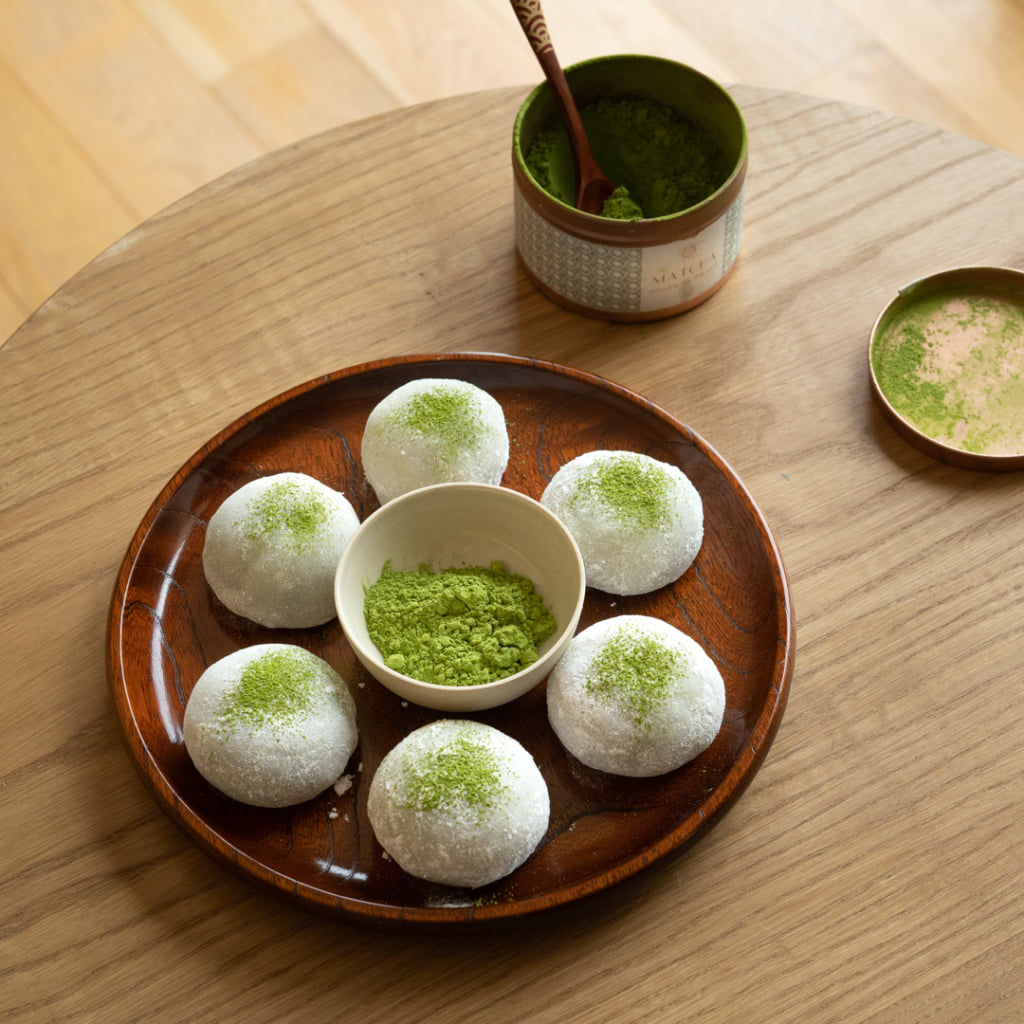
Matcha and coconut mochi made by Mathilda Motte at La Maison du Mochi © Violette Hyounet for Pen
Mathilda Motte first discovered mochi in a konbini, one of Japan’s convenience stores that are packed with snacks and meals to be eaten on the go to satisfy one’s hunger at any time of day or night.
It was 2011-2012, she was living in Japan and writing the blog Cuisine en bandoulière, and it was a case of love at first sight. ‘The first time I tried mochi, I was struck by the smoothness of the texture; for me it was like the embodiment of sweetness’, recalls Mathilda Motte, who first tasted an ichigo daifuku, a type of mochi containing a whole strawberry. ‘You feel like you’re eating something good and really treating yourself. I now know that it also represents the height of comfort food for the Japanese.’
The surprising flavours of Japanese ingredients
Not long after, she tried her hand at making a sakura mochi with her Japanese teacher. When she returned to France, Mathilda Motte continued to cook mochi, using various garnishes and fillings. She dares to replace the shiroan (white bean paste) filling with almond paste, which adds an Oriental twist to mochi, a dessert that lends itself well to this kind of combination. In 2016, Mathilda Motte launched La Maison du Mochi with a view to sharing her creative variations with the general public. The company developed from its beginnings as an online shop, and now has two branches in Paris.
Following her experience in Japan, Mathilda Motte has retained her affection for Japanese ingredients like shiso, with its edible leaf characterised by strong flavours. When cooking at home, she also incorporates ingredients like miso in her French dishes that work wonders, adding a distinctive taste to stews. The creator admits that she was surprised by the flavour of cherry tree leaves in sakura mochi. ‘You expect a floral taste but it’s a cinnamon, bitter almond flavour instead. It’s spicy and completely crazy!’
Matcha tea sourced from Kyushu
The identity of La Maison du Mochi lies halfway between France and Japan, so it is important to the founder to use Japanese products in her recipes. Thus, the yuzu and lemon mochi is made using a precious yuzu essential oil, and the green tea for the matcha mochi was directly sourced by the founder and her associate Hiroaki Suzuki from a tea producer in Kirishima on Kyushu island in southern Japan.
‘This tea is very balanced’, Mathilda Motte explains. ‘It’s sweet with a pleasant hint of bitterness, but not too much. It has an umami quality that’s almost buttery, milky, with a vegetal touch.’
La Maison du Mochi packs this matcha tea immediately to make it available for sale, a mark of their recognition of the quality of the product, and to guarantee optimal freshness until the powder is consumed.
‘Pampered’ products
Mathilda Motte acknowledges that she got this attention to detail from her Japanese suppliers. ‘The charm of Japanese gastronomy lies in the fact that the products are pampered’, she enthuses. ‘Great care is taken during all the stages of production and you very rarely get a product that is bad quality due to having been mistreated during the manufacturing, drying or preservation process.’
This perfectionism is what attracts Mathilda Motte to Japanese gastronomy. It is a cuisine in which a wide variety of dishes can be created using few ingredients, providing that they are of an incomparable quality and freshness. The founder of La Maison du Mochi wishes to continue to take advantage of the potential offered by Japanese products. She hopes to one day be able to proposer a dish based around ume, Japanese plums with a very subtle flavour that would pair wonderfully well with the roundness of mochi.
Exclusively for Pen, Mathilda Motte shares her recipe for matcha and coconut mochi, made using matcha tea from Kirishima in Kagoshima prefecture.
Makes 8 mochi
Ingredients
For the mochi dough
- 80 g shiratamako (sticky rice flour). Avoid sweet potato starch.
- 70 g organic unrefined cane sugar
- 140 ml water
- Starch for the dusting powder (organic tapioca is more digestible and less allergenic than maize. You can also use arrowroot starch, but avoid potato starch)
For the filling/garnish
- 1 tsp matcha
- 80 g grated coconut (grated as finely as possible)
- 90 g white almond powder (relatively fine)
- 60 g sugar
- 30 ml deodorised coconut oil (don’t melt it if it is in a solid state; incorporate and work with it as it is)
- 10 ml maple syrup (serves as a flavour enhancer)
- 50 ml water (then add 15 ml then 10 ml if needed)
- Pinch of salt
Utensils: high speed mixer, steaming basket, scissors, whisk, spatula, dough scraper and kabuki-style brush
Method
For the mochi dough, place the shiratamako, cane sugar and water in a bowl and mix. The texture needs to be very liquid. Place in the steaming basket for 30 minutes. Halfway through, mix and check the texture. The rice should be set and the edges should be more cooked than the middle. Work the dough with strong gestures to make sure the water is mixed in and the cooking is consistent.
In parallel, place the almond powder, grated coconut, sugar and a pinch of salt in the mixing bowl. Use a serrated blade and mix for 30 seconds. Don’t add the matcha yet, as it could heat up in contact with the mixer.
Add the coconut oil gradually (rather in two stages) and the matcha to the fine mixture. Knead well with your hands and distribute the matcha and coconut oil evenly. The mixture will turn a green colour. The texture should evoke that of crumble. Make sure to add the water last. Pay attention to lumps; you can feel with your hand if the texture is too liquid or too hard, so work little by little. Adjust the quantity according to the texture; it needs to come together well but without being too liquid.
(The filling gives the mochi its shape. If the inside is too liquid, the mochi will be flat. On the other hand, if the filling is too hard, the mochi will be very tight and the inside could even tear the dough covering it.)
Form the dough into a ball in your hand. Cut the ball in half, then in four, then in eight using the dough scraper. Roll each little ball by hand to make sure they are even. You don’t need to make perfectly formed balls as they will be inside the mochi.
Once the mochi dough has been cut, it should become slightly yellow and translucent (whereas it was originally a milky white colour). Check the colour of the dough in the bottom of the bowl. If it’s a milky white colour, it needs cooking a little longer. If it’s translucent, it’s cooked.
In general, it’s better to work with mochi dough that is overcooked rather than undercooked, as otherwise it risks tearing and sticking.
Dust the work surface with your chosen starch. Gather the mochi dough compactly using the dough scraper. It needs to be gathered together well so you can cut it. Dust the mochi dough with the starch and leave to cool for five minutes. Spread the starch over the dough, then cut it into eight pieces using scissors. Each time, dip the shiny part that has just been cut in the starch so that the outer surface of the dough remains homogenous and impregnated with starch.
With starch-covered hands, pick up one of the pieces of dough. Stretch it by pressing with your fingertips on roughly the size of a palm. Then take a ball of the filling, place it in the centre and close the mochi dough like a bundle, upwards, in a triangle folded like a gyoza with its little characteristic pleats. Then turn and quickly twist the dough so it keeps the desired shape and does not harden. Speed is essential when making mochi. Finally, cut the top part that’s sticking out so the mochi is even. Use the palm of your hand to give it a nicely rounded shape.
Using the brush, dust the mochi with starch. To finish, use a fine sieve to lightly dust the top of the mochi with matcha. Eat with sencha tea or coffee.
More information about La Maison du Mochi can be found on its website and on the Taste of Japan platform.
Addresses: 39 rue du Cherche-Midi, 75006 Paris and 120 rue de Turenne, 75003 Paris.
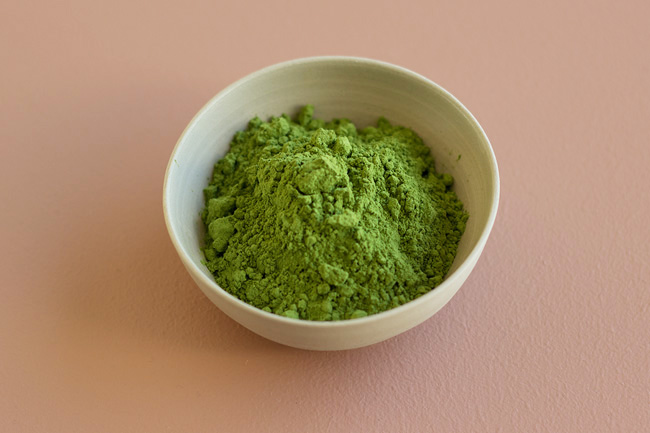
Japanese matcha tea distributed by La Maison du Mochi
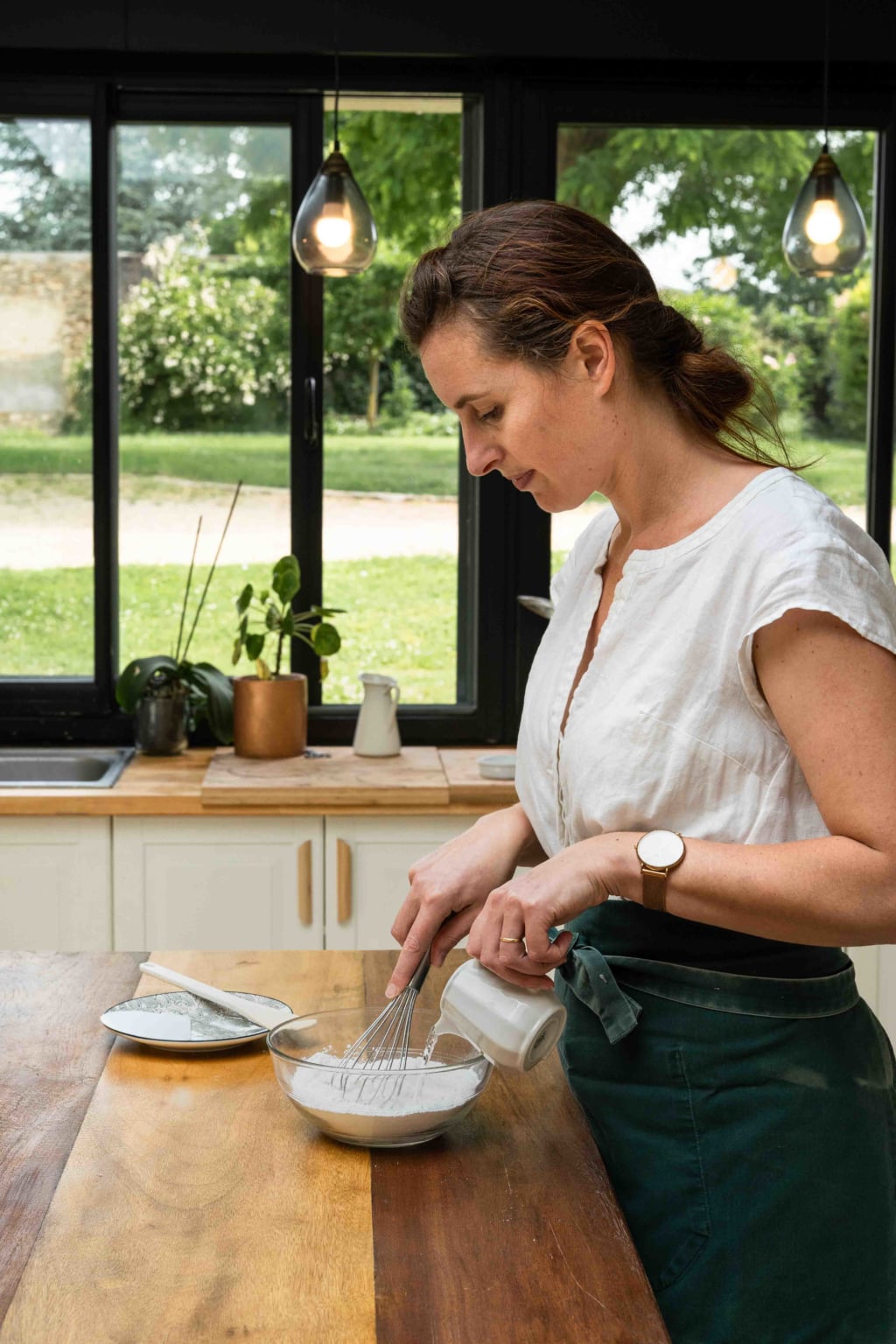
Step 1: Mix the ‘shiratamako’, cane sugar and water in a bowl - Mathilda Motte at La Maison du Mochi © Violette Hyounet for Pen
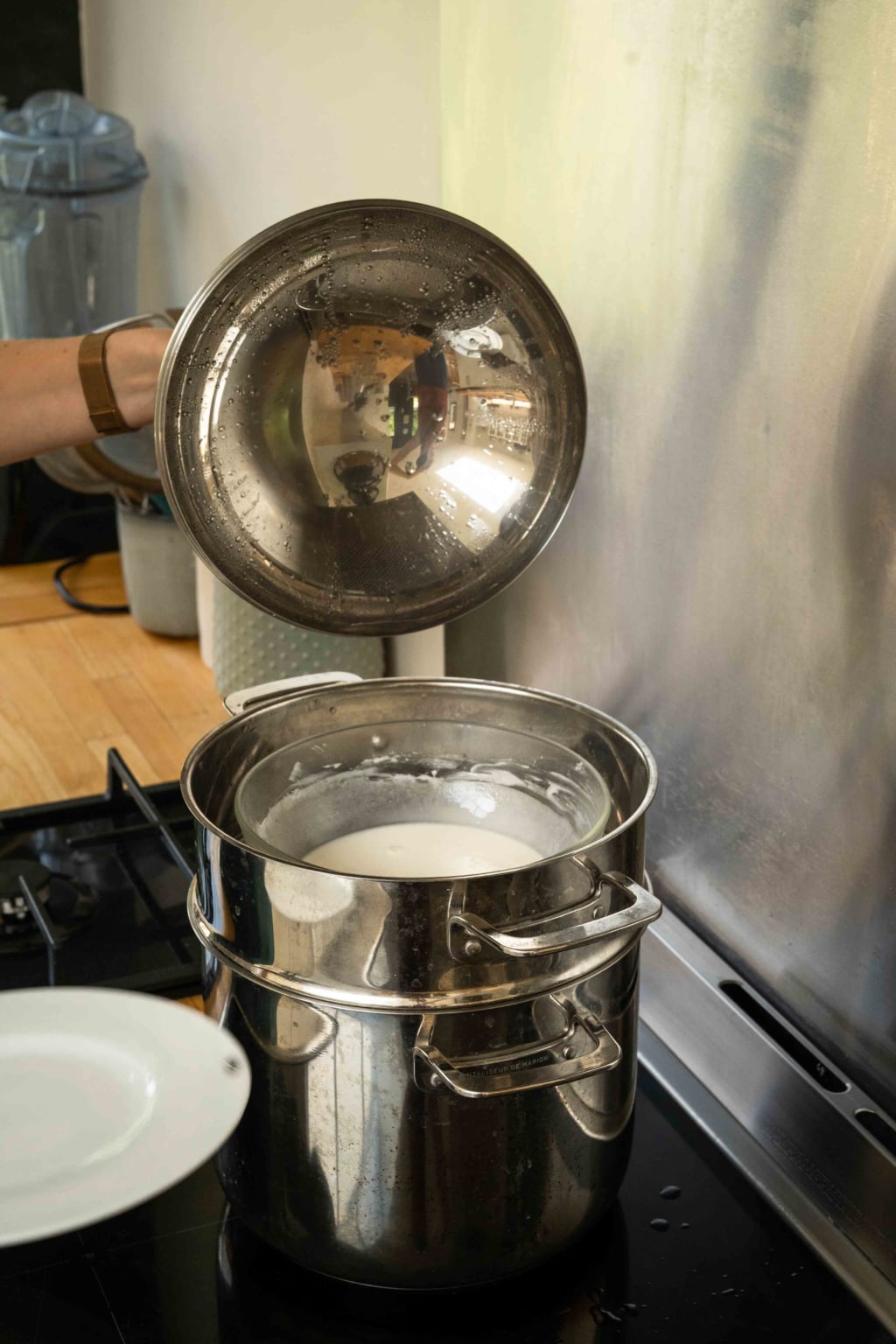
Step 2: Place in the steaming basket for 30 minutes - Mathilda Motte at La Maison du Mochi © Violette Hyounet for Pen
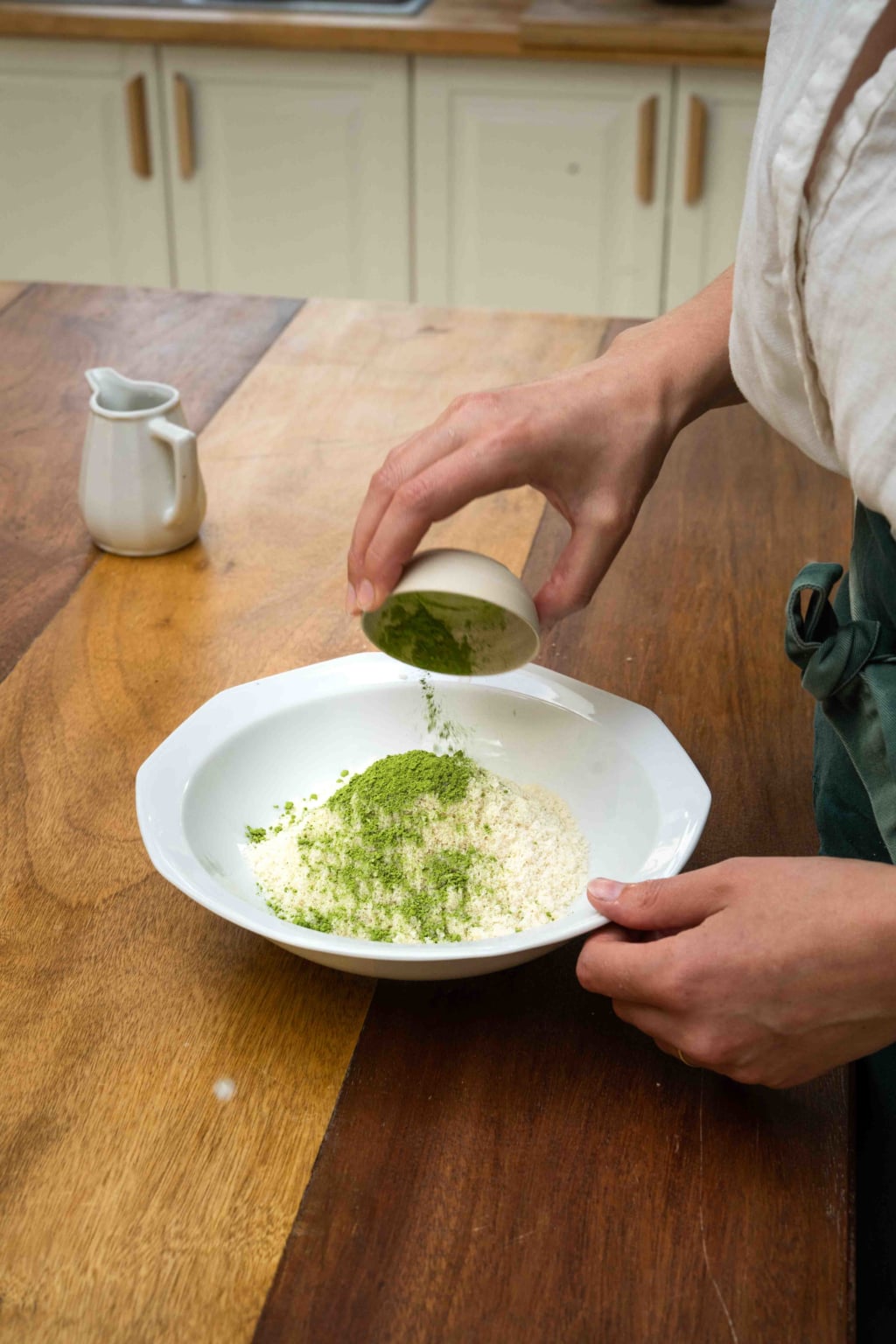
Step 3: Add the matcha to the fine mixture - Mathilda Motte at La Maison du Mochi © Violette Hyounet for Pen
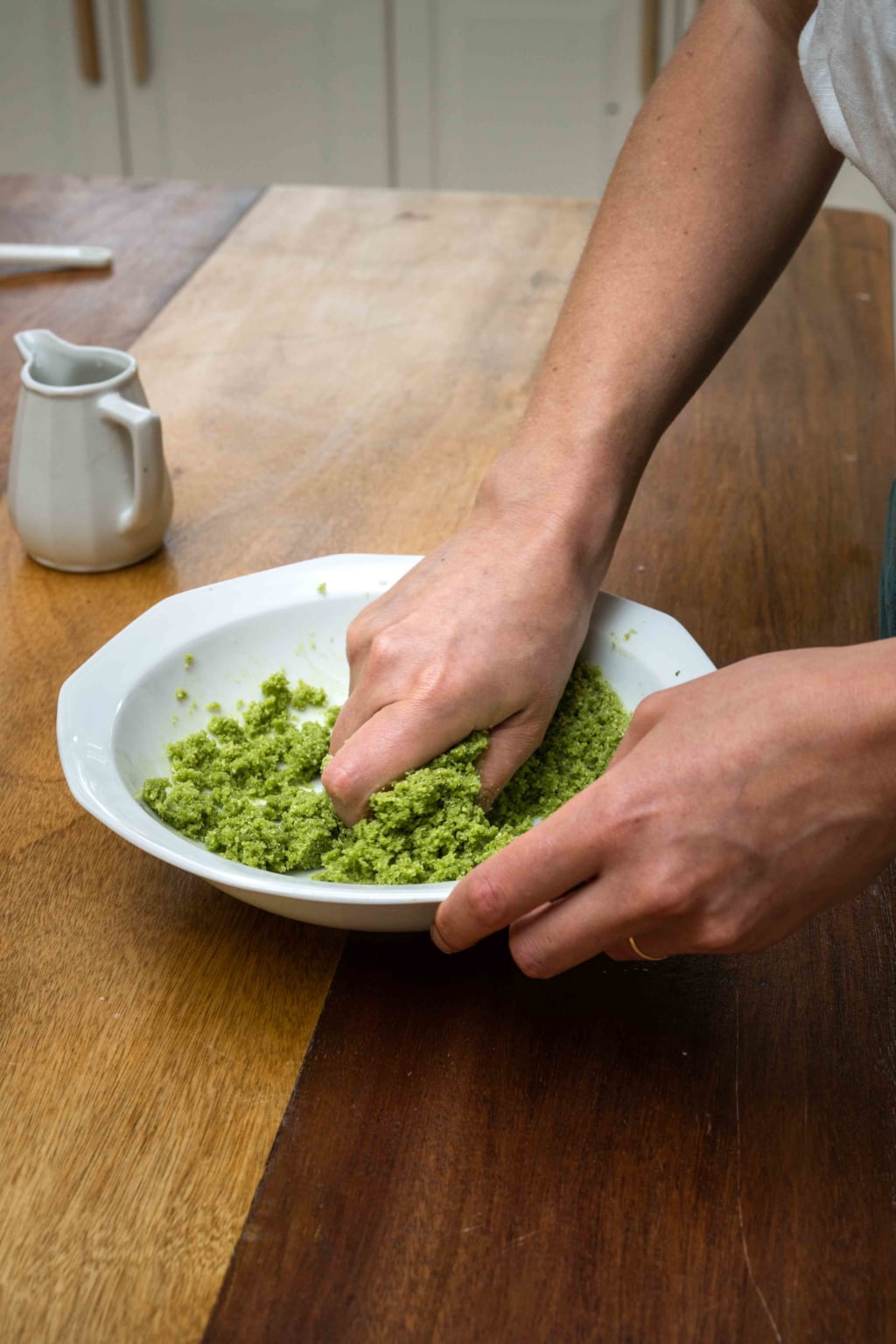
Step 4: Knead well with your hands and distribute the matcha and coconut oil evenly - Mathilda Motte at La Maison du Mochi © Violette Hyounet for Pen
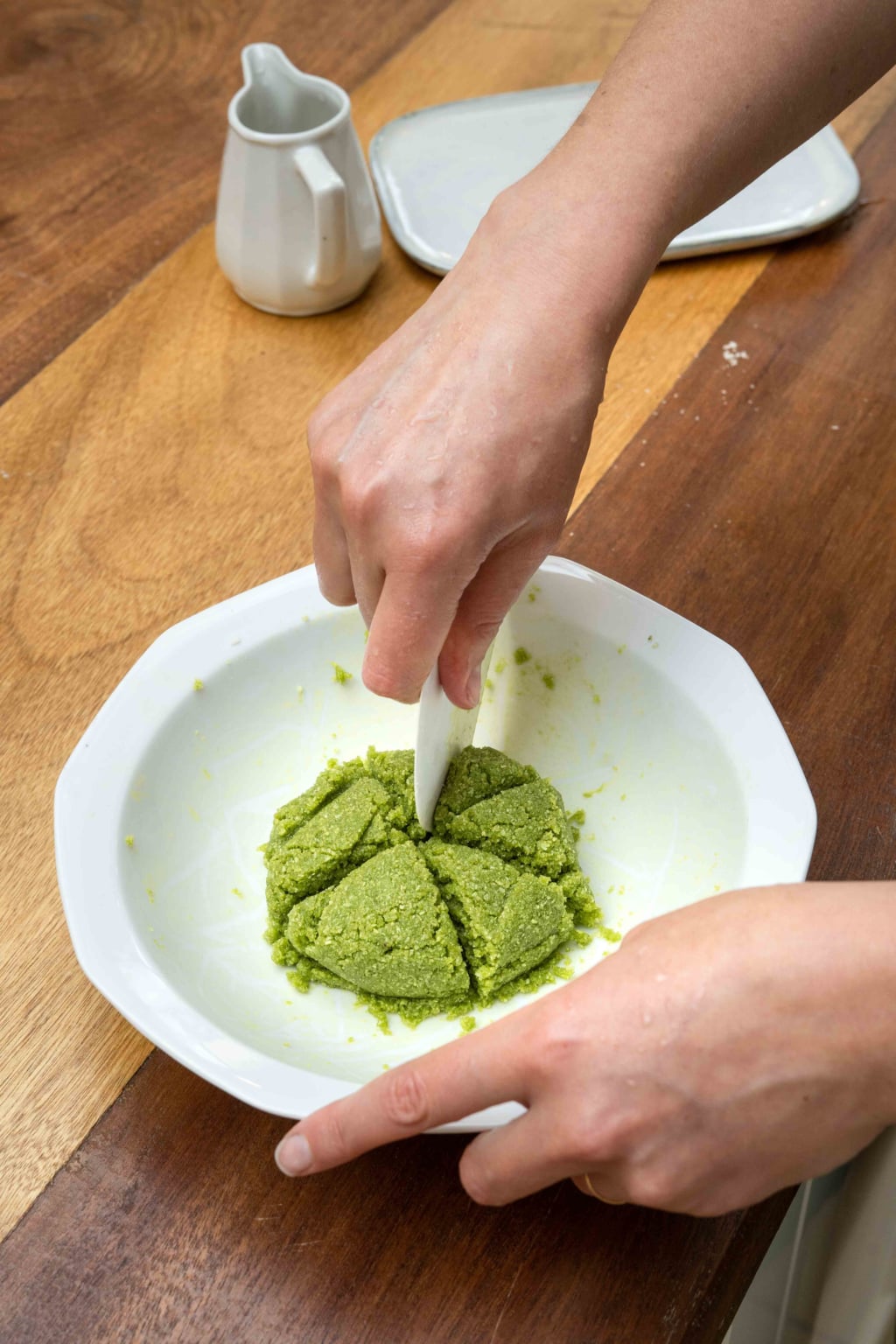
Step 5: Cut the ball in half, then in four, then in eight using the dough scraper - Mathilda Motte at La Maison du Mochi © Violette Hyounet for Pen
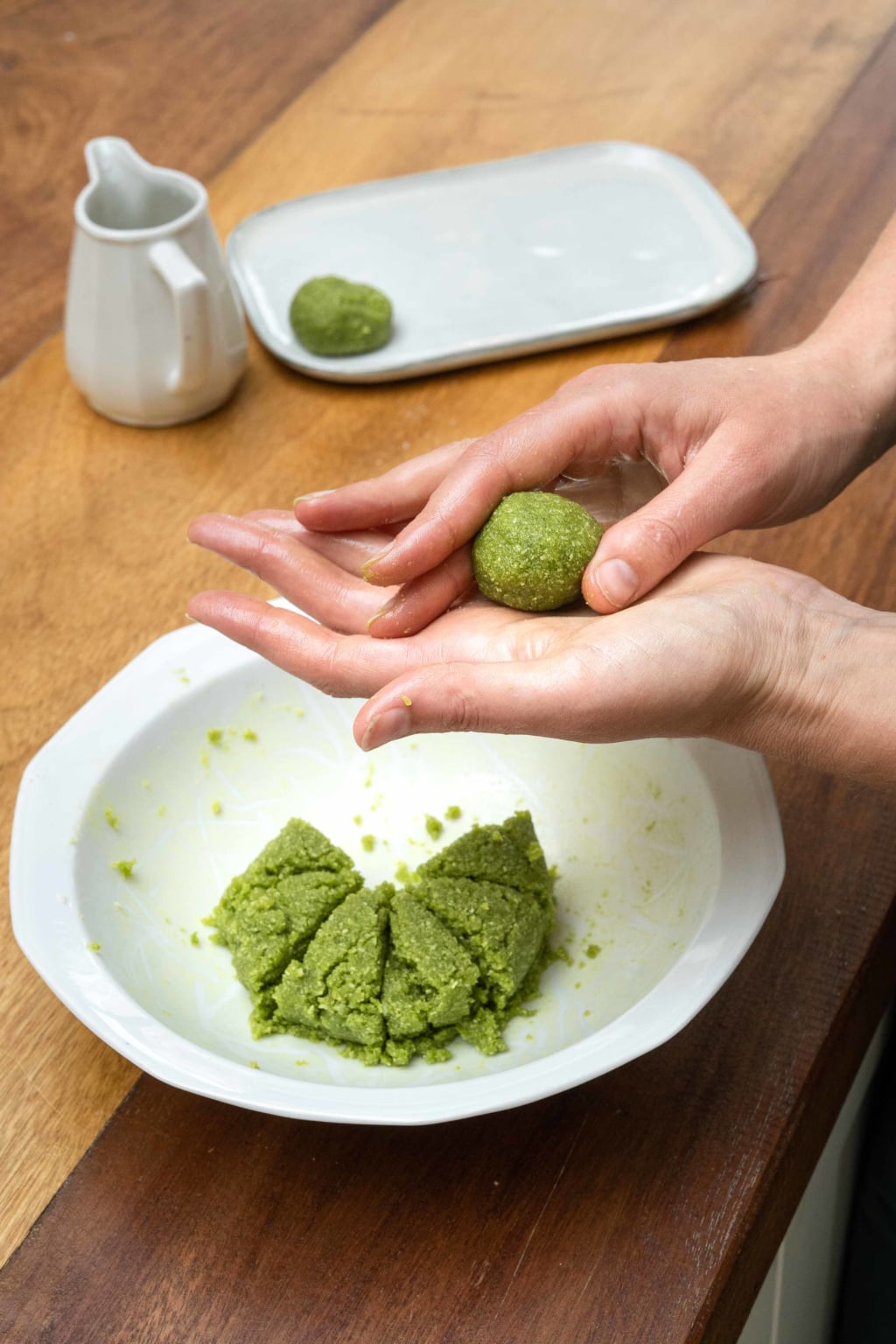
Step 6: Roll each little ball by hand so they are even - Mathilda Motte at La Maison du Mochi © Violette Hyounet for Pen
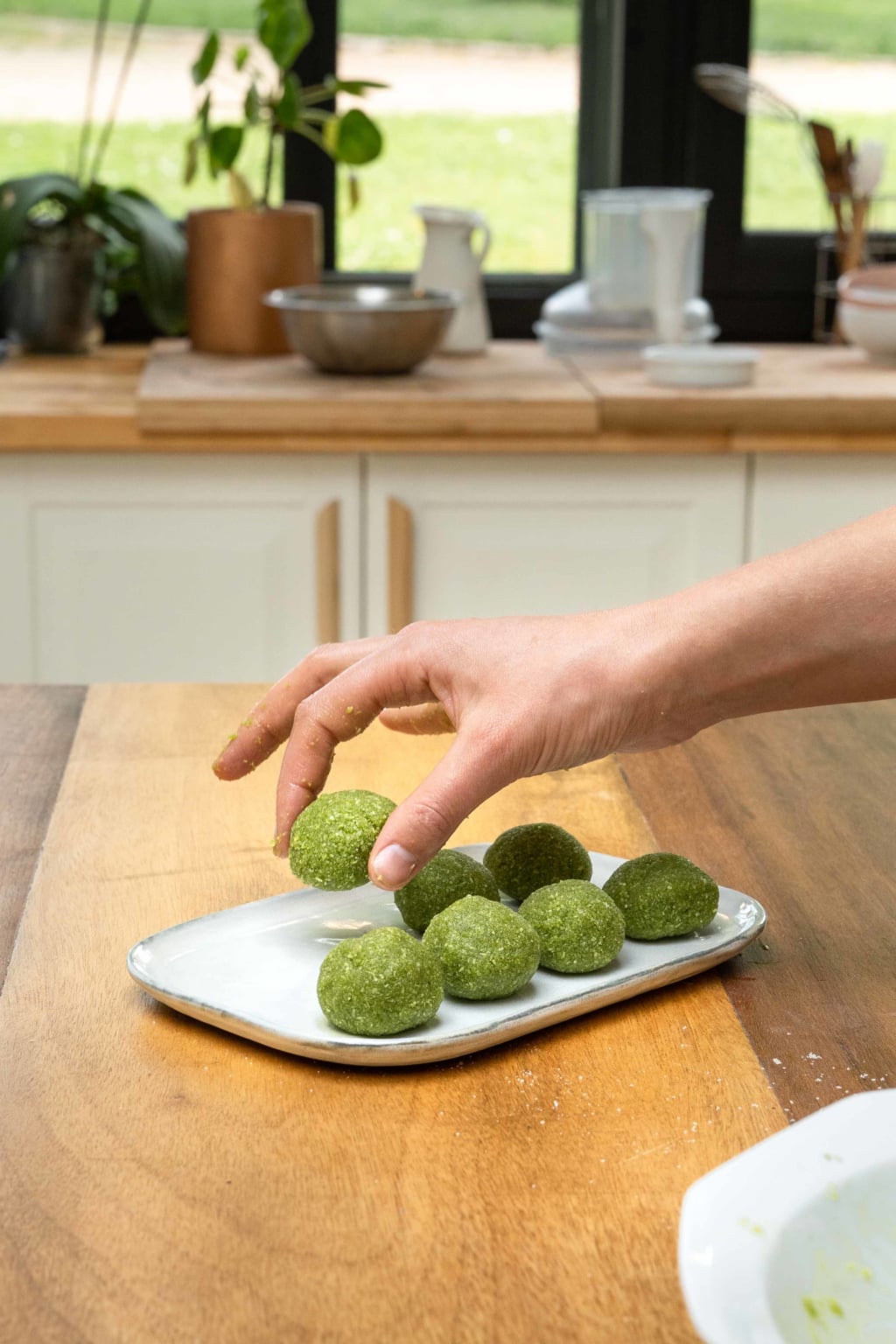
The balls do not need to be perfectly shaped as they will go inside the mochi - Mathilda Motte at La Maison du Mochi © Violette Hyounet for Pen
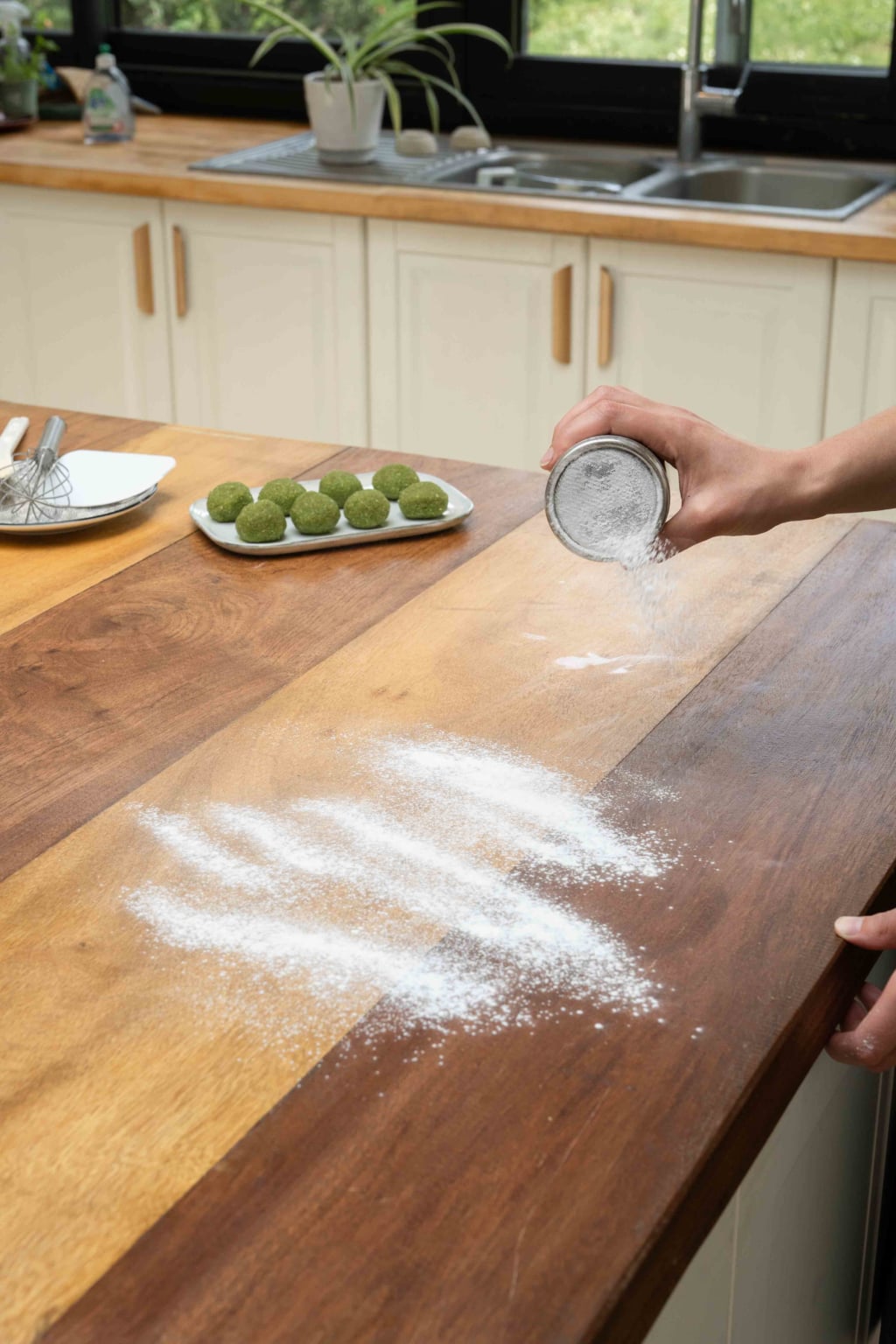
Step 7: Dust the work surface with your chosen starch - Mathilda Motte at La Maison du Mochi © Violette Hyounet for Pen
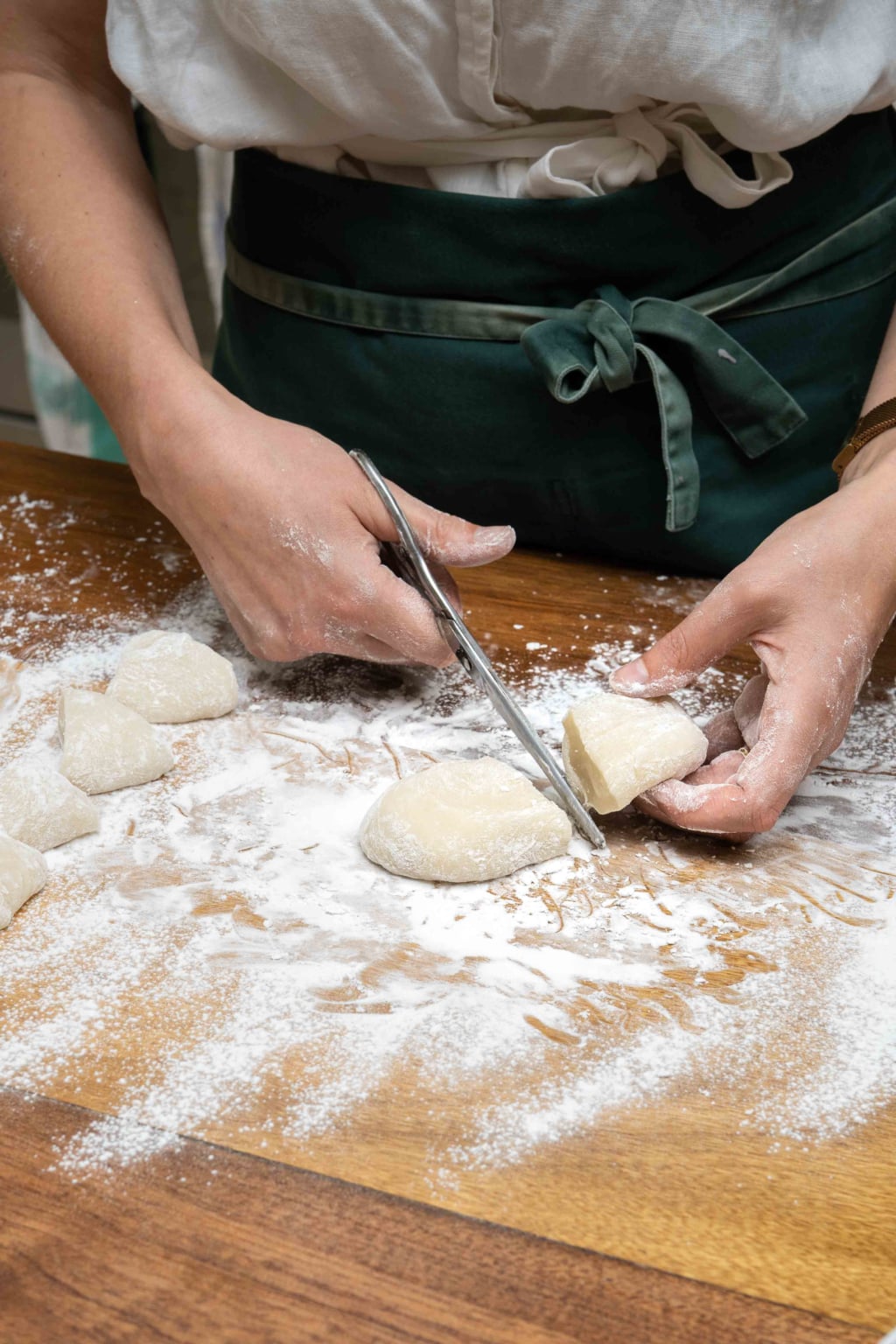
Step 8: Cut the mochi dough into eight pieces using scissors - Mathilda Motte at La Maison du Mochi © Violette Hyounet for Pen
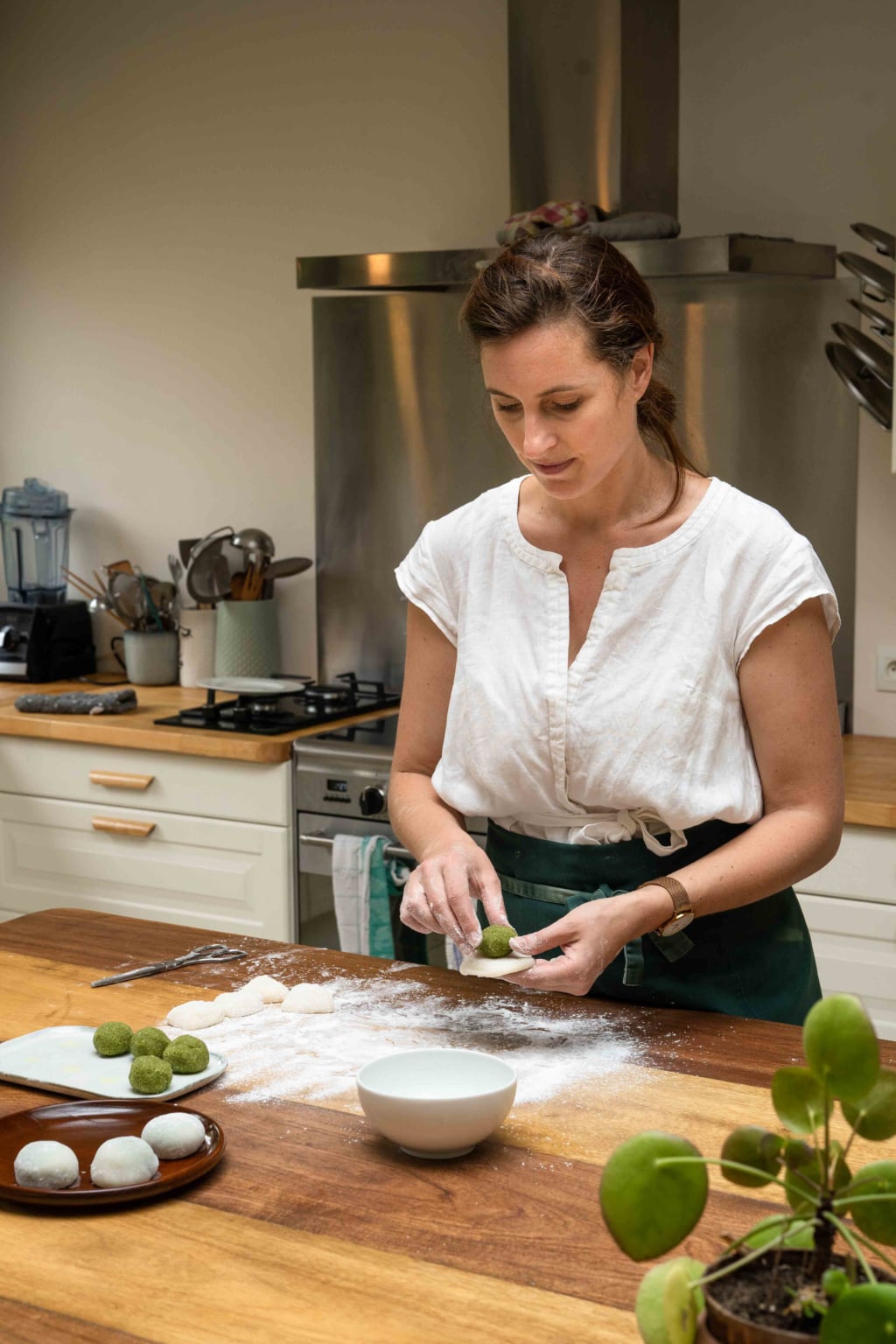
Step 9: Take a ball of the filling and place it in the centre of the mochi dough - Mathilda Motte at La Maison du Mochi © Violette Hyounet for Pen
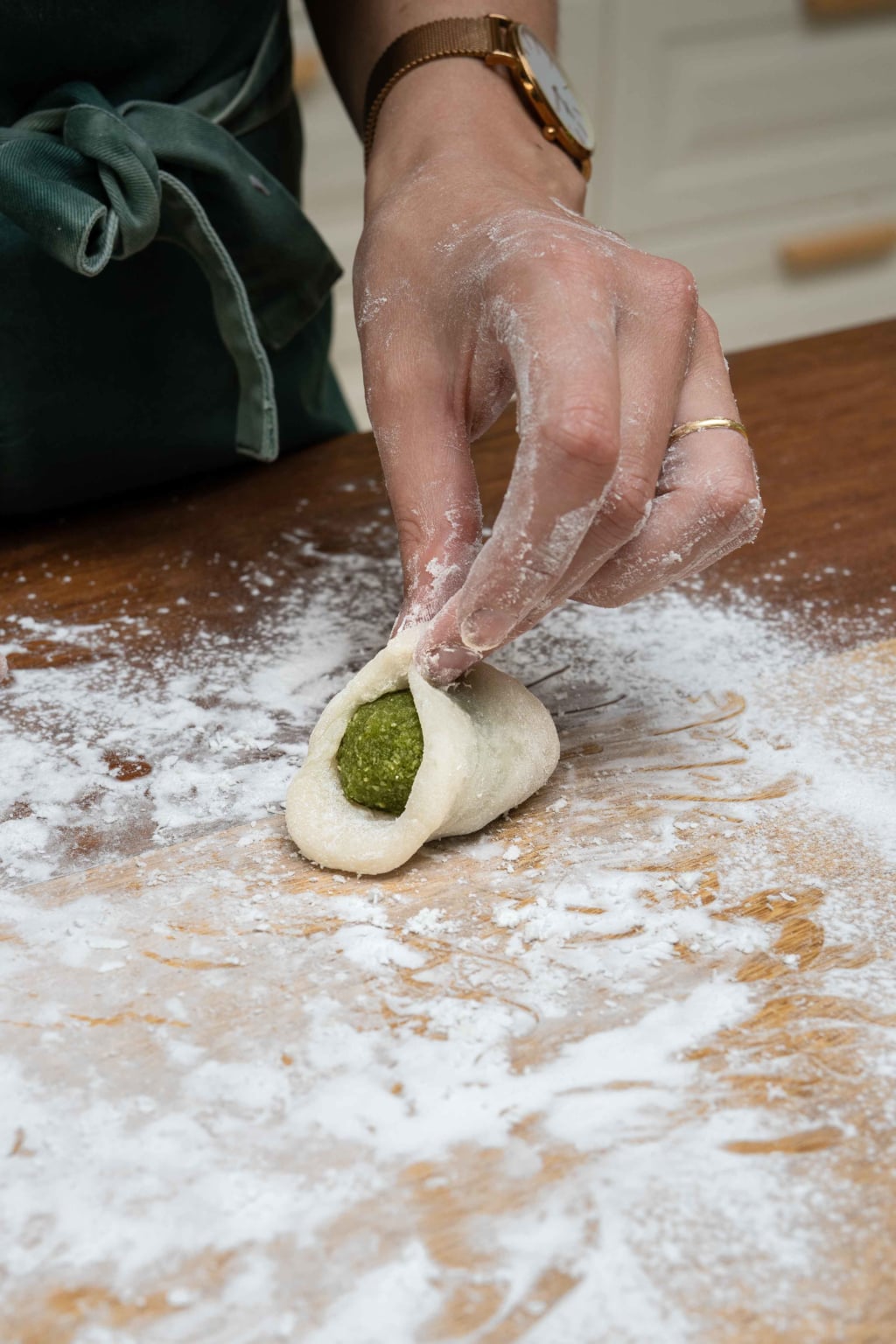
Step 10: Close the mochi dough like a little bundle - Mathilda Motte at La Maison du Mochi © Violette Hyounet for Pen
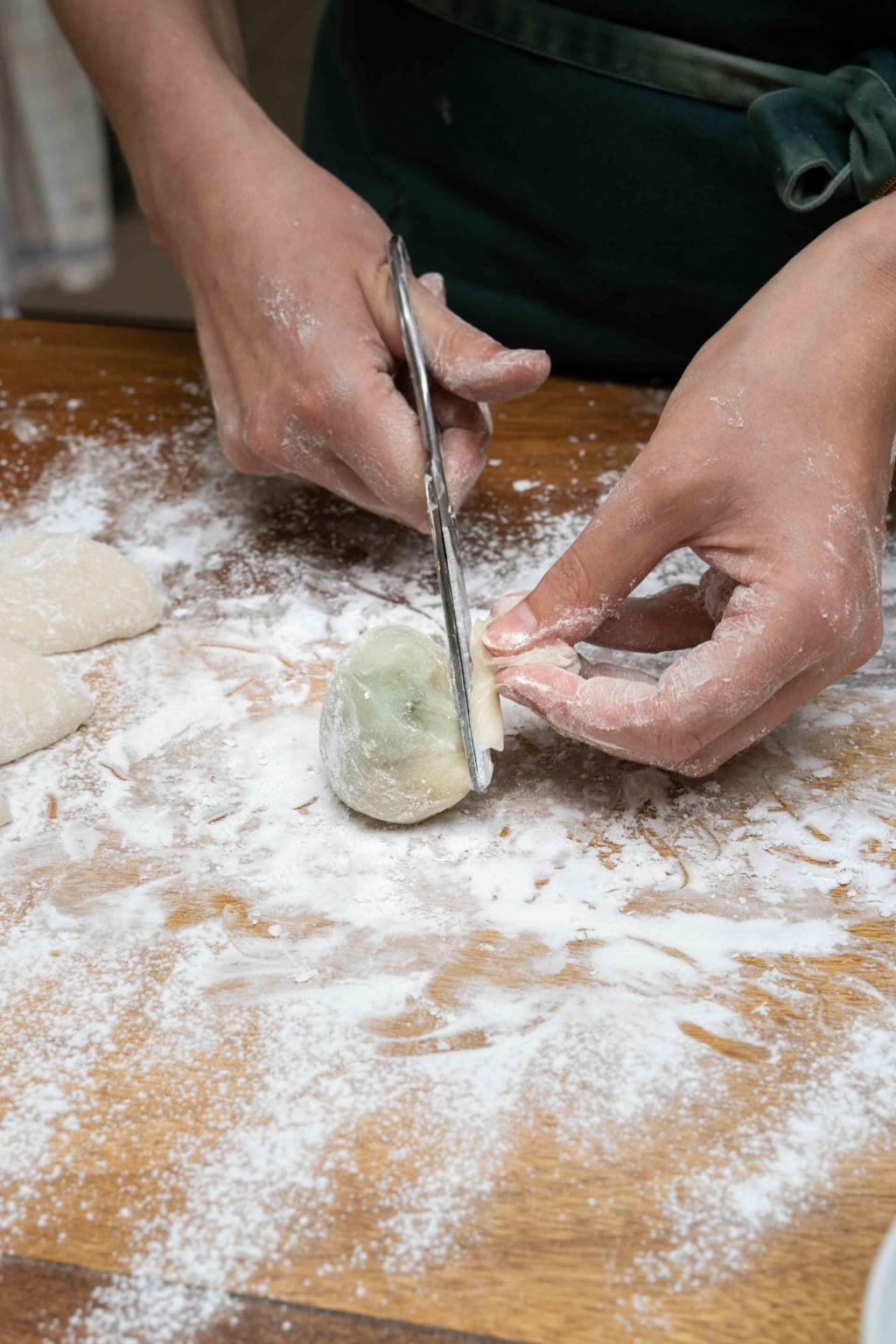
Step 11: Cut the top part that is sticking out to make sure the mochi are even - Mathilda Motte at La Maison du Mochi © Violette Hyounet for Pen

Step 12: Use your palm to give the mochi a nicely rounded shape - Mathilda Motte at La Maison du Mochi © Violette Hyounet for Pen
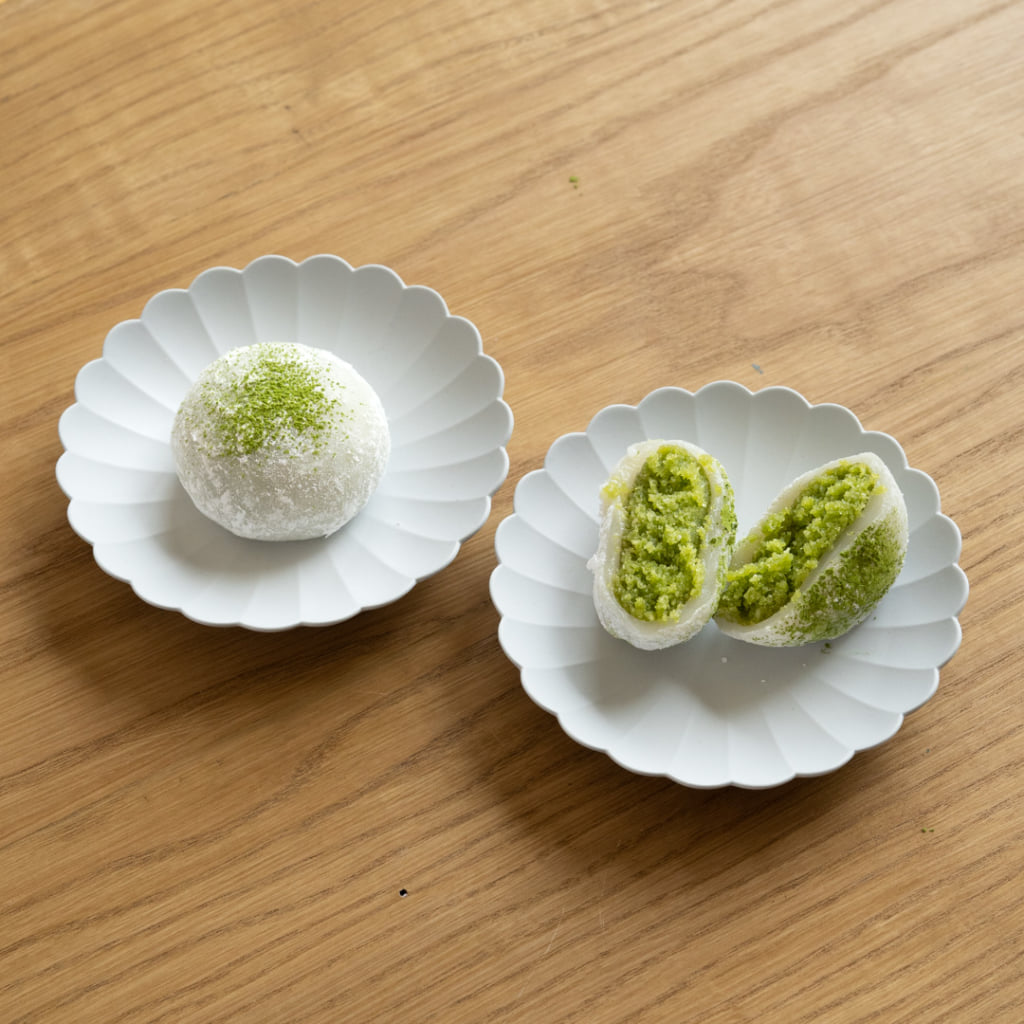
Matcha and coconut mochi ready to eat - Mathilda Motte at La Maison du Mochi © Violette Hyounet for Pen
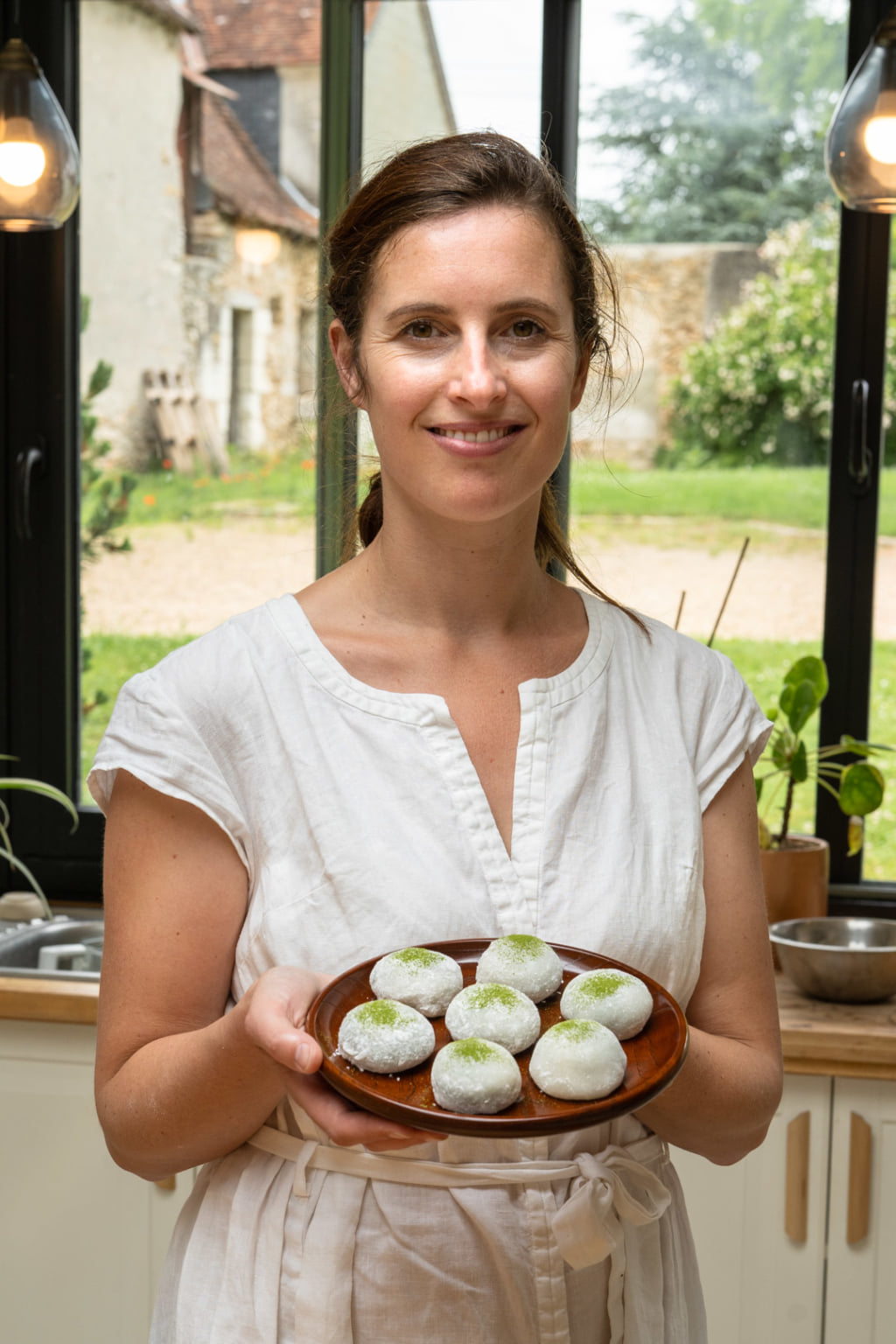
Mathilda Motte at La Maison du Mochi © Violette Hyounet for Pen

© Rebecca Zissmann

© Lisa Klein - Agence Lucky for La Maison du Mochi
TRENDING
-
A House from the Taisho Era Reveals Its Secrets
While visiting an abandoned building, Hamish Campbell discovered photographs the owner had taken of the place in the 1920s.

-
The Taboo-Breaking Erotica of Toshio Saeki
The master of the 1970s Japanese avant-garde reimagined his most iconic artworks for a limited box set with silkscreen artist Fumie Taniyama.

-
With Meisa Fujishiro, Tokyo's Nudes Stand Tall
In the series 'Sketches of Tokyo', the photographer revisits the genre by bringing it face to face with the capital's architecture.

-
Masahisa Fukase's Family Portraits
In his series ‘Family’, the photographer compiles surprising photos in which he questions death, the inescapable.

-
Hajime Sorayama's Futuristic Eroticism
The illustrator is the pioneer for a form of hyperrealism that combines sensuality and technology and depicts sexualised robots.





